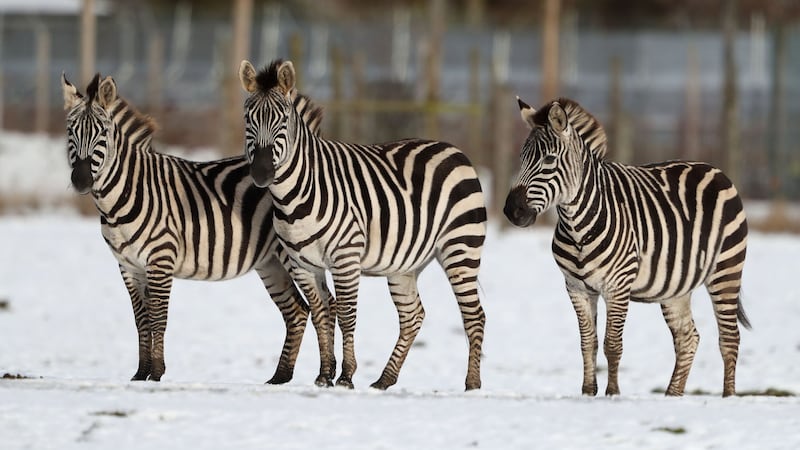Why do zebras have their unique black and white stripes?
It’s a question many scientists have been asking ever since British naturalist Charles Darwin laid out his views on evolution in the mid-19th century.
And one of the most compelling arguments was that their stripes may have an evolutionary purpose that keeps the animals cool in the hot weather.
But now, a group of researchers in Sweden say they have debunked this theory, saying that temperature has nothing to do with the existence of stripes.
They believe that the zebra’s black and white fur works as an “optical protection” against insects – such as blood-sucking horseflies.
The logic behind the temperature theory is that during hot weather, the black stripes get warmer than the white areas, creating small vortexes when the hotter air above the dark fur meets the cooler air above the white fur which work as a fan to cool the body.
To test this theory, the researchers filled metal barrels with water and covered them in different colours imitating the fur of species belonging to the equus (horse) family: black and white stripes, black, white, brown and grey.
They then placed the barrels in the sun and later measured the temperature in each barrel.
The black one was found to be the hottest while the white one emerged the coolest. The temperatures in the striped and grey barrels were similar but not significantly lower.
Susanne Akesson, a biologist at Lund University in Sweden, said: “The stripes didn’t lower the temperature. It turns out stripes don’t actually cool zebras.”
Ms Akesson and her team are now proposing another theory they developed eight years ago, where they say that horseflies are attracted by polarised light, ie, “the sort of light that appears when sunbeams are reflected on a dark surface”.
Ms Akesson was awarded with the Ig Nobel Prize two years ago, along with Hungarian physicist Gabor Horvath and some other colleagues, for work on polarised light, based on the research that showed that blood-sucking insects bother dark horses more than they bother white horses.
The research is published in the journal Scientific Reports.










